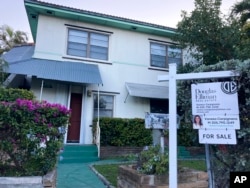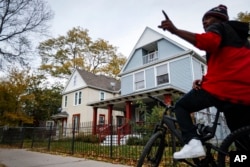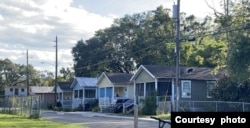Florida homeowner Shaniqua Rose is used to fielding offers to sell her home in the historically Black community of Parramore in Orlando.
“I actually got text messages three times in the last month from the same phone number, asking to purchase my home,” says Rose, who grew up in Central Florida and purchased a home in Parramore in 2018.
As a homeowner, Rose is in the minority among her neighbors.
“Only 10% are owners,” she says. “I would say at least 80% of the homes that are here are an investor property.”
The housing situation in Parramore isn’t unique. It’s being repeated in major U.S. cities across the country. More than 13% of all homes sold in 2021 were sold to investors, according to the National Association of Realtors (NAR). First-time homebuyers are 30% of the market right now. In a healthy market, 40% of buyers are first-time homebuyers, NAR says.
“It's been very difficult for homebuyers to find affordable or starter homes. And when they're buying lower cost homes, they're competing with investors who are coming in with cash offers and that's difficult to compete with,” says Anne Ray, a researcher at the Shimberg Center for Housing Studies at the University of Florida.
It’s a trend that accelerated during the pandemic, according to NAR.
“We have seen, during the pandemic especially, that investors, whether it's a mom-and-pop investor or an institutional investor, are coming into the marketplace for rental properties,” says Jessica Lautz, NAR’s vice president of demographics and behavioral insights. “Investors are jumping into the market understanding there's demand for rental properties and this allows them to actually increase rents and to have this as an investment property that can be income generating.”
And technology is making it easier for investors to buy affordable homes on a large scale.
“I think what's relatively new is these large investors picking up lots of properties and using a lot of automated tools and working at scale to acquire properties,” Ray says. “That used to be harder to do.”
When prospective buyers can’t afford to buy, the ripple effect can extend to the rental market.
“It also makes it more difficult for other people to find affordable rental housing,” Ray says, “because people who would have moved on from a rental to an ownership unit are staying in the rental unit.”
Among the homes most desired by investors are those in mainly Black zip codes, like Rose’s property. The Washington Post analyzed 40 major U.S. metropolitan areas and found that Black neighborhoods have been “heavily targeted.”
“Investors are more likely to be purchasing more affordable properties, ones that are 26% below the median home price,” says Lautz. “The higher concentration of institutional investors is seen in lower-income and racially diverse, especially predominantly Black, household areas.”
Investor activity is especially high in southernmost states, from Arizona to Florida, which comes as no surprise to Rose, who sees the change happening around her.
“Gentrification is here in Parramore. You can't stop it,” she says. “What is not happening, in my opinion, is there's not a concerted effort to increase financial opportunities for the individuals who live here so that they can afford to stay here. Communities have done it, where they redevelop, and they've been able to keep those same people there.”
One solution could be to develop more community land trusts, which are nonprofits that acquire homes and land with the purpose of keeping the housing permanently affordable. Often in these trusts, equity in the home is split between the nonprofit and the homeowner once the homeowner sells the property at an affordable price.
“They've (community land trusts) been particularly successful in preserving affordable homeownership in neighborhoods that are threatened with gentrification, often in traditional African-American neighborhoods that are near downtown where gentrification has taken place,” Ray says. “That preserves affordable units for the long term and allows the neighborhood to be more economically diverse.”
Rose, who founded an organization called Change for the Community shortly after buying her house in Parramore, would like to see additional home ownership opportunities for communities of color.
“If you continue to build apartments, which I find is happening in predominantly African American communities…with no condos, you're not creating generational wealth in any way, shape or form,” Rose says. “You're continuing the cycle of renting. So I think governments, especially here locally, need to start looking at how do we create ownership opportunities?”









